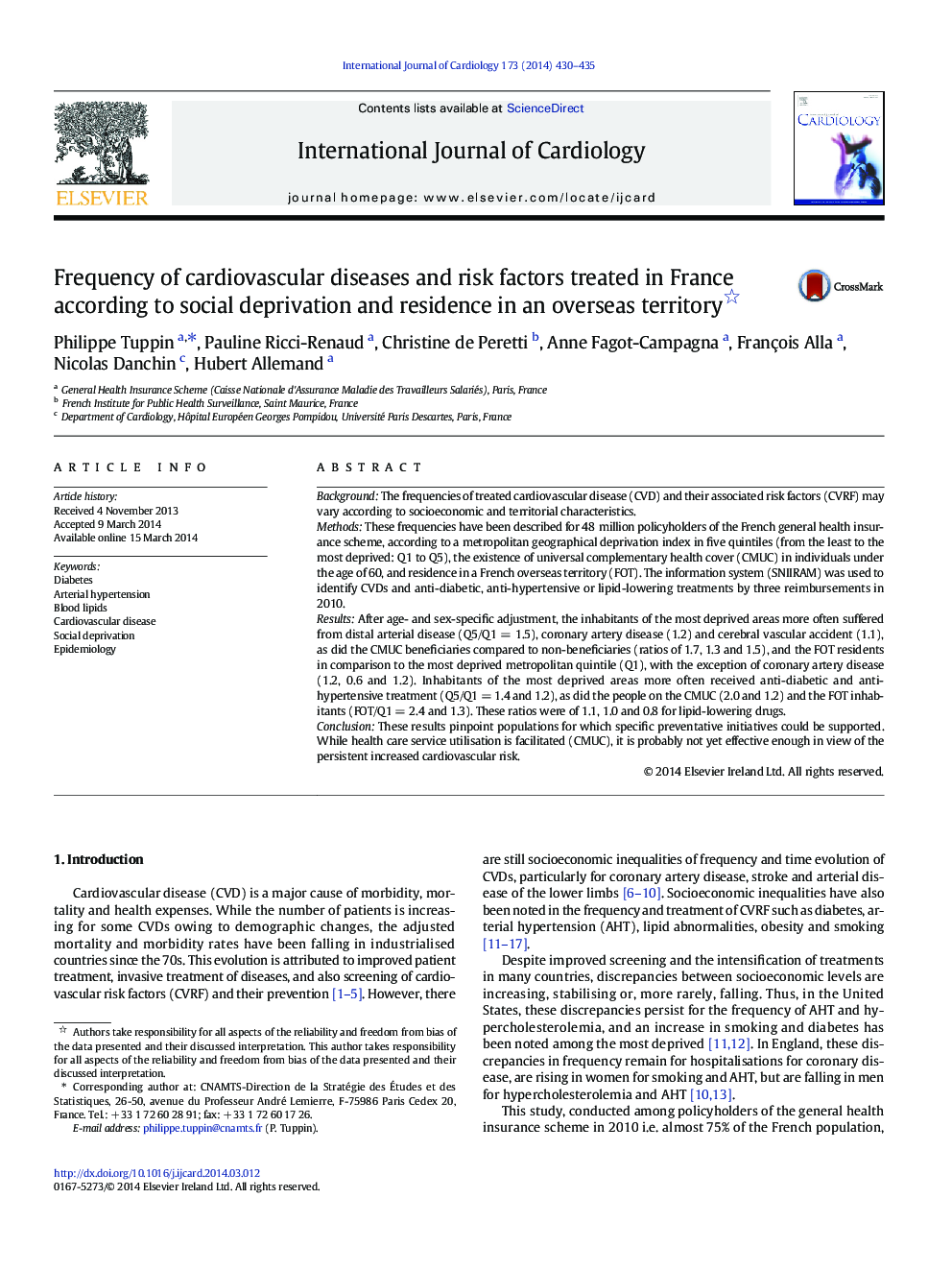| Article ID | Journal | Published Year | Pages | File Type |
|---|---|---|---|---|
| 5972782 | International Journal of Cardiology | 2014 | 6 Pages |
BackgroundThe frequencies of treated cardiovascular disease (CVD) and their associated risk factors (CVRF) may vary according to socioeconomic and territorial characteristics.MethodsThese frequencies have been described for 48Â million policyholders of the French general health insurance scheme, according to a metropolitan geographical deprivation index in five quintiles (from the least to the most deprived: Q1 to Q5), the existence of universal complementary health cover (CMUC) in individuals under the age of 60, and residence in a French overseas territory (FOT). The information system (SNIIRAM) was used to identify CVDs and anti-diabetic, anti-hypertensive or lipid-lowering treatments by three reimbursements in 2010.ResultsAfter age- and sex-specific adjustment, the inhabitants of the most deprived areas more often suffered from distal arterial disease (Q5/Q1Â =Â 1.5), coronary artery disease (1.2) and cerebral vascular accident (1.1), as did the CMUC beneficiaries compared to non-beneficiaries (ratios of 1.7, 1.3 and 1.5), and the FOT residents in comparison to the most deprived metropolitan quintile (Q1), with the exception of coronary artery disease (1.2, 0.6 and 1.2). Inhabitants of the most deprived areas more often received anti-diabetic and anti-hypertensive treatment (Q5/Q1Â =Â 1.4 and 1.2), as did the people on the CMUC (2.0 and 1.2) and the FOT inhabitants (FOT/Q1Â =Â 2.4 and 1.3). These ratios were of 1.1, 1.0 and 0.8 for lipid-lowering drugs.ConclusionThese results pinpoint populations for which specific preventative initiatives could be supported. While health care service utilisation is facilitated (CMUC), it is probably not yet effective enough in view of the persistent increased cardiovascular risk.
